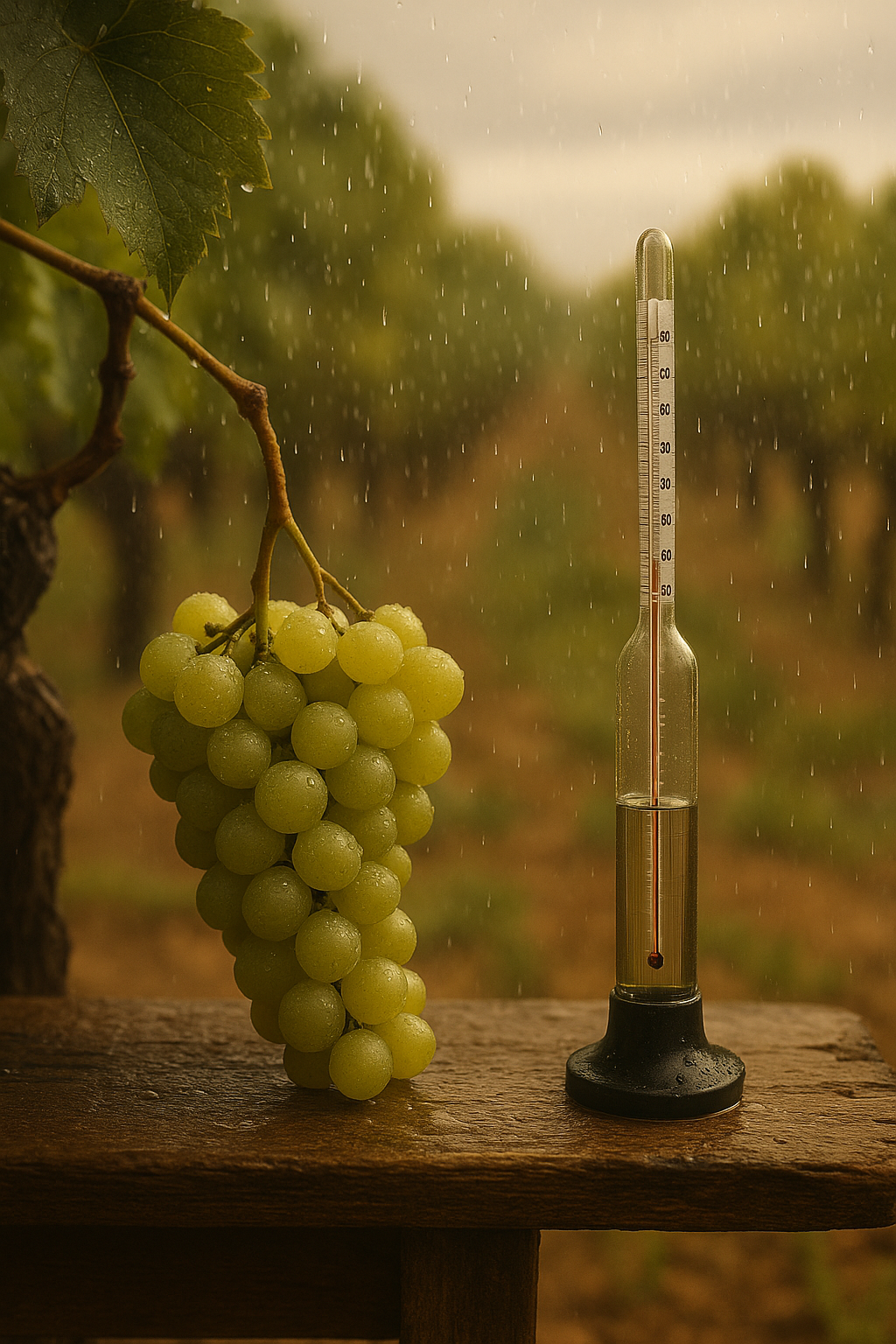
Humidity's impact on grape acidity
Share
The Science Behind Grape Acidity
Grape acidity is a crucial factor that influences the flavor profile, balance, and overall quality of wine. At its core, acidity in grapes is primarily composed of three organic acids: tartaric, malic, and citric. These acids are not only responsible for the crispness and freshness of the wine but also play a vital role in its preservation and aging potential. The science behind grape acidity is deeply intertwined with environmental conditions, particularly humidity. High humidity levels can lead to increased moisture in the vineyard, which may slow down the ripening process. As grapes mature, the balance between sugar and acidity shifts; excessive humidity can result in lower acidity levels, yielding wines that may lack the desired brightness. Conversely, in drier conditions, grapes tend to retain higher acidity, contributing to a more vibrant and structured wine. Understanding this delicate interplay between humidity and grape acidity is essential for vintners aiming to craft wines that reflect both the terroir and the intended style.
How Humidity Levels Influence Acidity in Grapes
Humidity levels play a crucial role in determining the acidity of grapes, as they directly affect the physiological processes within the vine. High humidity can lead to an increase in grape acidity by promoting a slower rate of photosynthesis and sugar accumulation. When the moisture in the air is elevated, vines may struggle to transpire effectively, which can hinder their ability to convert sunlight into energy. This imbalance often results in a higher concentration of organic acids, particularly tartaric and malic acids, as the grapes retain more of their natural acidity.
Conversely, low humidity tends to accelerate ripening, leading to an increase in sugar levels while potentially decreasing acidity. Under these drier conditions, grapes may lose moisture more rapidly, which can result in a dilution of their acidic components. The delicate interplay between humidity and grape acidity is vital for winemakers, as it influences not only the flavor profile of the wine but also its aging potential and overall balance. Understanding these dynamics allows vintners to make informed decisions about vineyard management and harvest timing, ultimately shaping the character of the final product.
Implications for Winemakers and Vineyard Management
Understanding the implications of humidity on grape acidity is crucial for winemakers and vineyard managers aiming to produce high-quality wines. Elevated humidity levels can inhibit the evaporation of moisture from grape skins, resulting in higher acidity retention during the ripening process. This phenomenon can lead to wines that are more vibrant and expressive, appealing to consumers who favor crisp, refreshing profiles. However, excessive humidity can also foster conditions conducive to fungal diseases, such as powdery mildew, which can compromise grape quality and yield.
To navigate these challenges, vineyard management strategies must adapt. Implementing proper canopy management techniques can enhance air circulation, reducing disease risk while maintaining the desired acidity levels. Additionally, selecting grape varieties that are resilient to high humidity can help mitigate potential losses. Ultimately, a nuanced understanding of humidity's role in grape acidity allows winemakers to craft distinctive wines that reflect the unique terroir of their vineyards, balancing the natural elements with thoughtful cultivation practices.
